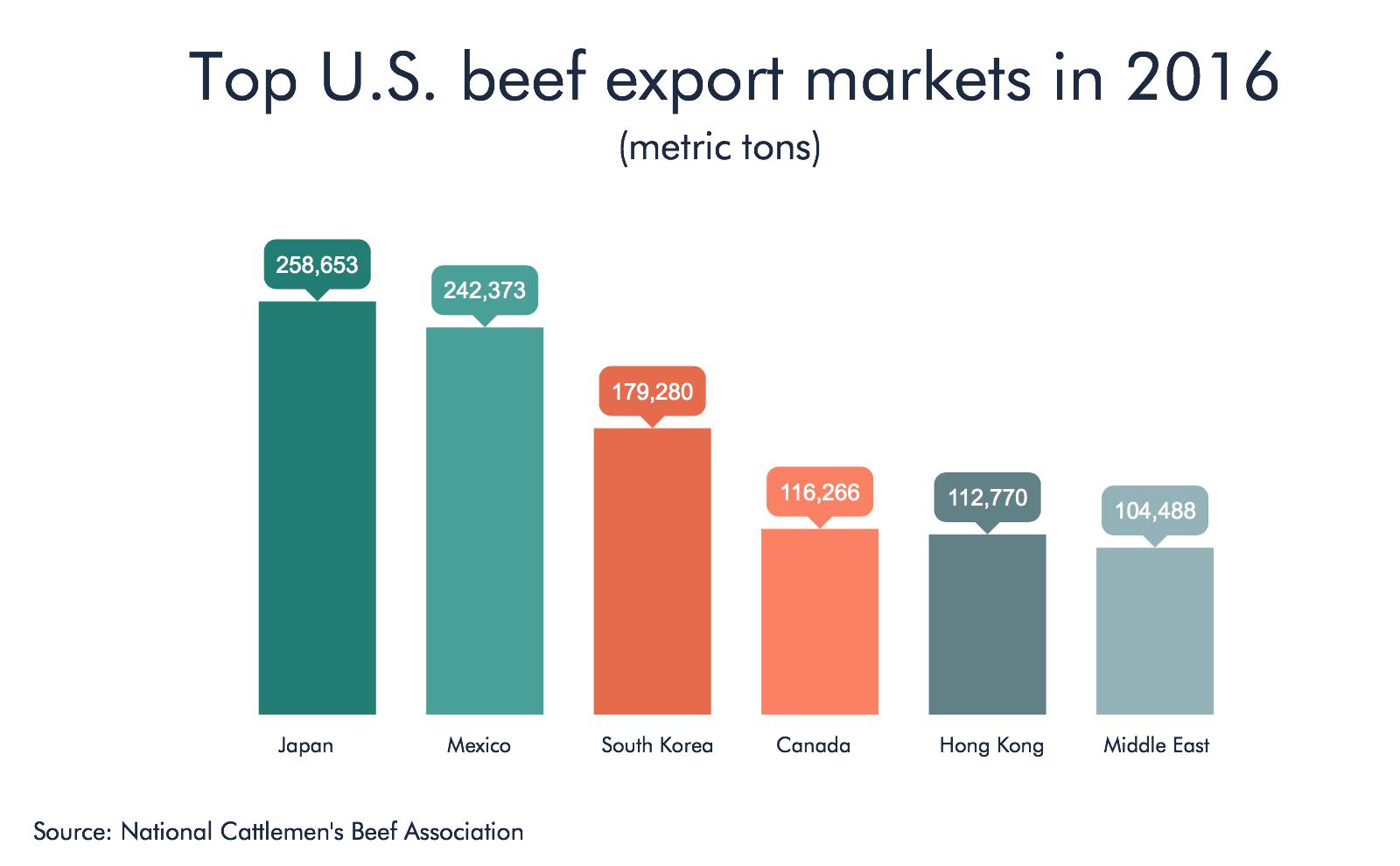Published 16 June 2017
In 2016, American ranchers sold $6.3 billion worth of beef overseas, finding its way into traditional meat dishes. And now, thanks to a new trade deal, they can sell beef to China.
What’s the Beef?
Governments have an obligation to take measures to protect their citizens from food safety risks and to protect their animal populations from disease and other threats to their health, not the least of which because we eat them. But, governments can legitimately disagree on the type and degree of regulations that are appropriate. And in recent years, there has been growing concern among farmers and ranchers that such regulations are being misused as trade protectionism. The lines between safety and preference can be easily blurred, and arguments over competing scientific claims are difficult and time consuming to resolve.
Herd Mentality
One such dispute between the United States and China has lasted 14 long years. The Chinese Government banned exports of certain U.S. beef products in 2003 after mad cow disease affected some American herds. Issues like these require very technical solutions, and without a trade agreement in place, our ranchers miss out on a lucrative and growing market for high quality meat.
The U.S. Department of Agriculture recently finalized the terms for establishing and administering a system to assure that U.S. beef exports meet agreed requirements for export to China. Individual cattle must be traced to their birth farm or to the first port of entry in the United States; the cattle must be less than 30 months old, raised and slaughtered in the United States, or under certain conditions from Canada or Mexico; and, it must be tested for ractopamine, a drug that promotes growth. It’s a detailed agreement that will require time to implement as U.S. ranchers put in place the means to prove they comply, and it will add costs to U.S. beef production.
Meat Eaters of the World
Nonetheless, ranchers are optimistic about the agreement’s prospects for increasing sales to China. Americans love beef and we eat a lot of it – 25.7 billion pounds last year was consumed through foodservice and retail sales. That’s about 55.7 pounds per person. But we’re not the only hearty meat eaters. In fact, while beef sales in the United States are strong, they aren’t growing. The National Cattlemen’s Beef Association believes that exports represent the greatest opportunity to increase sales of U.S. beef and support U.S. jobs.
In 2016, American ranchers sold $6.3 billion worth of beef overseas, finding its way into traditional meat dishes from yakiniku in Japan to tacos al carbon in Mexico, and bulgogi in South Korea.

In the race to meet growing Chinese beef consumption, Brazil reached a deal with China in 2015 to lift the ban on imports, enabling it to both resume sales and overtake Australia which had been the largest exporter of beef and beef products to China the previous five years. China is expected to import 950,000 metric tons in 2017, a 19-percent year-on-year increase.
Jobs at Home on the Range
Roughly 900,000 Americans make their living on a ranch. About 80 percent of ranches in the United States are small, with fifty or fewer young cattle. They are often family owned and operated. The average age of a principal cattle rancher is 58.3 years old, but our beef industry is in its prime.
The United States is the world’s largest producer of high-quality, grain-fed beef. With just 10 percent of the world’s total cattle, U.S. ranchers are the most productive in the world, earning $68 billion in farm cash receipts.

As with other productive sectors, ranching supports a network of suppliers and customers. Ranchers buy livestock equipment, nutrition and animal health products, and veterinary services. They work with grain merchants, auctioneers, and commodity merchandisers. Their beef is packaged, processed and shipped to supermarkets, food service suppliers and restaurants. Increased exports of beef won’t just help ranchers, it helps the entire ecosystem of people and companies that support and thrive from a healthy beef industry.
It’s What’s For Dinner
When you have a great slogan, it withstands the test of time. Remember the commercials from the 1990s featuring the slogan, “Beef, it’s what’s for dinner”? That campaign is still running today.
With exports to Hong Kong already strong, the U.S.-China deal over time is likely to secure U.S. beef’s place on the dinner plate in Asia. Like we do, they’ll be humming the Aaron Copeland song “Hoe-Down” before too long.
© The Hinrich Foundation. See our website Terms and conditions for our copyright and reprint policy. All statements of fact and the views, conclusions and recommendations expressed in this publication are the sole responsibility of the author(s).





